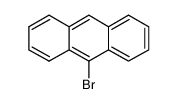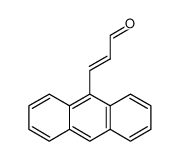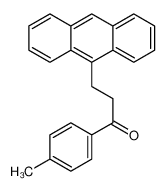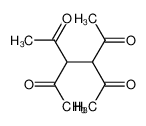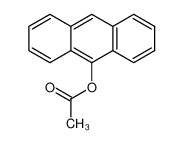1.Identification
1.1 GHS Product identifier
| Product name | anthracene |
|---|
1.2 Other means of identification
| Product number | - |
|---|---|
| Other names | Anthracene |
1.3 Recommended use of the chemical and restrictions on use
| Identified uses | For industry use only. |
|---|---|
| Uses advised against | no data available |
1.4 Supplier's details
| Company | MOLBASE (Shanghai) Biotechnology Co., Ltd. |
|---|---|
| Address | Floor 4 & 5, Building 12, No. 1001 North Qinzhou Road, Xuhui District, Shanghai, China |
| Telephone | +86(21)64956998 |
| Fax | +86(21)54365166 |
1.5 Emergency phone number
| Emergency phone number | +86-400-6021-666 |
|---|---|
| Service hours | Monday to Friday, 9am-5pm (Standard time zone: UTC/GMT +8 hours). |
2.Hazard identification
2.1 Classification of the substance or mixture
Not classified.
2.2 GHS label elements, including precautionary statements
| Pictogram(s) | No symbol. |
|---|---|
| Signal word | No signal word. |
| Hazard statement(s) | none |
| Precautionary statement(s) | |
| Prevention | none |
| Response | none |
| Storage | none |
| Disposal | none |
2.3 Other hazards which do not result in classification
none
3.Composition/information on ingredients
3.1 Substances
| Chemical name | Common names and synonyms | CAS number | EC number | Concentration |
|---|---|---|---|---|
| anthracene | anthracene | 120-12-7 | none | 100% |
4.First-aid measures
4.1 Description of necessary first-aid measures
General advice
Consult a physician. Show this safety data sheet to the doctor in attendance.
If inhaled
Fresh air, rest. Refer for medical attention.
In case of skin contact
Remove contaminated clothes. Rinse and then wash skin with water and soap.
In case of eye contact
First rinse with plenty of water for several minutes (remove contact lenses if easily possible), then refer for medical attention.
If swallowed
Rinse mouth. Rest. Refer for medical attention .
4.2 Most important symptoms/effects, acute and delayed
Inhalation of dust irritates nose and throat. Contact with eyes causes irritation. (USCG, 1999)
4.3 Indication of immediate medical attention and special treatment needed, if necessary
/SRP:/ Immediate first aid: Ensure that adequate decontamination has been carried out. If patient is not breathing, start artificial respiration, preferably with a demand-valve resuscitator, bag-valve-mask device, or pocket mask, as trained. Perform CPR as necessary. Immediately flush contaminated eyes with gently flowing water. Do not induce vomiting. If vomiting occurs, lean patient forward or place on left side (head-down position, if possible) to maintain an open airway and prevent aspiration. Keep patient quiet and maintain normal body temperature. Obtain medical attention. /Aromatic hydrocarbons and related compounds/
5.Fire-fighting measures
5.1 Extinguishing media
Suitable extinguishing media
To fight fire, use water, foam, carbon dioxide, water spray or mist, dry chemical.
5.2 Specific hazards arising from the chemical
This chemical is combustible.
5.3 Special protective actions for fire-fighters
Wear self-contained breathing apparatus for firefighting if necessary.
6.Accidental release measures
6.1 Personal precautions, protective equipment and emergency procedures
Use personal protective equipment. Avoid dust formation. Avoid breathing vapours, mist or gas. Ensure adequate ventilation. Evacuate personnel to safe areas. Avoid breathing dust. For personal protection see section 8.
6.2 Environmental precautions
Sweep spilled substance into covered containers. Carefully collect remainder. Then store and dispose of according to local regulations. Do NOT let this chemical enter the environment. Personal protection: P2 filter respirator for harmful particles.
6.3 Methods and materials for containment and cleaning up
Pick up and arrange disposal. Sweep up and shovel. Keep in suitable, closed containers for disposal.
7.Handling and storage
7.1 Precautions for safe handling
Avoid contact with skin and eyes. Avoid formation of dust and aerosols. Avoid exposure - obtain special instructions before use.Provide appropriate exhaust ventilation at places where dust is formed. For precautions see section 2.2.
7.2 Conditions for safe storage, including any incompatibilities
Separated from strong oxidants. Well closed.Must be stored in places cool enough to prevent accidental ignition ... Provide adequate ventilation ... Locate storage area well away from areas of fire hazard ... Kept apart from powerful oxidizing agents ...
8.Exposure controls/personal protection
8.1 Control parameters
Occupational Exposure limit values
Recommended Exposure Limit: 10 Hr Time-Weighted Avg: 0.1 mg/cu m (cyclohexane-extractable fraction). /Coal tar pitch volatiles/
NIOSH considers coal tar pitch volatiles to be potential occupational carcinogens. /Coal tar pitch volatiles/
Biological limit values
no data available
8.2 Appropriate engineering controls
Handle in accordance with good industrial hygiene and safety practice. Wash hands before breaks and at the end of workday.
8.3 Individual protection measures, such as personal protective equipment (PPE)
Eye/face protection
Safety glasses with side-shields conforming to EN166. Use equipment for eye protection tested and approved under appropriate government standards such as NIOSH (US) or EN 166(EU).
Skin protection
Wear impervious clothing. The type of protective equipment must be selected according to the concentration and amount of the dangerous substance at the specific workplace. Handle with gloves. Gloves must be inspected prior to use. Use proper glove removal technique(without touching glove's outer surface) to avoid skin contact with this product. Dispose of contaminated gloves after use in accordance with applicable laws and good laboratory practices. Wash and dry hands. The selected protective gloves have to satisfy the specifications of EU Directive 89/686/EEC and the standard EN 374 derived from it.
Respiratory protection
Wear dust mask when handling large quantities.
Thermal hazards
no data available
9.Physical and chemical properties
| Physical state | yellowish flakes |
|---|---|
| Colour | Monoclinic plates from alcohol recrystallization; when pure, colorless with violet fluorescence |
| Odour | Weak aromatic odor |
| Melting point/ freezing point | 8°C(lit.) |
| Boiling point or initial boiling point and boiling range | 340°C(lit.) |
| Flammability | Combustible. |
| Lower and upper explosion limit / flammability limit | Lower flammable limit: 0.6% by volume; /No upper limit available/ |
| Flash point | 121°C |
| Auto-ignition temperature | 540°C |
| Decomposition temperature | no data available |
| pH | no data available |
| Kinematic viscosity | no data available |
| Solubility | In water:0.045 mg/L (25 ºC) |
| Partition coefficient n-octanol/water (log value) | log Kow = 4.45 |
| Vapour pressure | 1 mm Hg ( 145 °C) |
| Density and/or relative density | 1.28 |
| Relative vapour density | 6.15 (vs air) |
| Particle characteristics | no data available |
10.Stability and reactivity
10.1 Reactivity
no data available
10.2 Chemical stability
Darkens in sunlight
10.3 Possibility of hazardous reactions
COMBUSTIBLE WHEN EXPOSED TO HEAT, FLAME, OR OXIDIZING MATERIALS.Dust explosion possible if in powder or granular form, mixed with air.ANTHRACENE will spontaneously burst into flame on contact with chromic acid, and other strong oxidants.
10.4 Conditions to avoid
no data available
10.5 Incompatible materials
Anthracene will burst into flame on contact with chromic acid.
10.6 Hazardous decomposition products
Thermal decomposition products include carbon dioxide, carbon monoxide, and organic compounds. /Aromatic hydrocarbons and related compounds/
11.Toxicological information
Acute toxicity
- Oral: LD50 Mouse oral >17 g/kg
- Inhalation: no data available
- Dermal: no data available
Skin corrosion/irritation
no data available
Serious eye damage/irritation
no data available
Respiratory or skin sensitization
no data available
Germ cell mutagenicity
no data available
Carcinogenicity
No data are available in humans. Inadequate evidence of carcinogenicity in animals. OVERALL EVALUATION: Group 3: The agent is not classifiable as to its carcinogenicity to humans.
Reproductive toxicity
no data available
STOT-single exposure
no data available
STOT-repeated exposure
no data available
Aspiration hazard
no data available
12.Ecological information
12.1 Toxicity
- Toxicity to fish: LC50; Species: Lepomis macrochirus (Bluegill sunfish, juvenile); Concentration: 11.9 ug/L for 96 hr /Phototoxicity study; Conditions of bioassay not specified
- Toxicity to daphnia and other aquatic invertebrates: EC50; Species: Daphnia magna (Water flea, age <24 hr); Conditions: freshwater, static; Concentration: 211 ug/L for 24 hr (95% confidence interval: 189-236 ug/L); Effect: intoxication, immobilization /> or =97% purity
- Toxicity to algae: EC50; Species: Scenedesmus subspicatus (Green algae, log growth phase 10000 cells/mL); Conditions: freshwater, static, 25°C; Concentration: 1040 ug/L for 7 days; Effect: decreased population growth rate />98% purity
- Toxicity to microorganisms: no data available
12.2 Persistence and degradability
AEROBIC: The biodegradability of anthracene with natural sediments and natural esturine waters has been studied. The biodegradation of anthracene in aquatic media is controlled by the temperature, oxygen content and acclimatization or nonacclimatization of the microorganisms. Higher biodegradation rates were observed at 30°C than at 20 and 10°C. The biodegradation process was found to be aerobic and higher oxygen concentration up to a certain optimum value tended to increase the oxidation rates. Similarly, the biodegradation rates were reported to be faster with acclimatized microorganisms. The incubation of anthracene with intertidal sediment slurries for a reasonable period of time (approx 1 month) not only produces the mineralization product carbon dioxide but also produces intermediate metabolites A large portion of the initial material or its intermediate metabolites (which could not be identified because (14)carbon counting of the combustion products of residue was used as the method of quantification) remained cellular bound.
12.3 Bioaccumulative potential
BCFs were measured in the following aquatic species: Goldfish, 162(1); Gambusia (fish), 1029(2); Rainbow trout, 4400 to 9200(3); Daphnia pulex, 759 to 912(4,5); Chlorella fusca variety vacuolata (green algae), 7760(6); Golden orfe, 912(7); Pontoporeia hoyi (scud), 17,000(8); and midge (Chironomousiparius), 46.7(9). A BCF of 7300 was measured in guppies, Poecilia reticulata, in static bioconcentration experiments(10). BCF values of 1660 to 2820 and 903 to 2710 were determined in carp using flow-through conditions and anthracene concns of 15 and 1.5 ug/L, respectively(11). According to a classification scheme(12), these BCFs suggest that bioconcentration in aquatic organisms ranges from moderate to very high(SRC). The BCF in Daphnia magna was found to decrease with increasing concn of Aldrich humic acids: BCF (dissolved organic carbon, mg/L), 607 (0.2) and 319 (2.0); however, this difference was not considered significant due to the large sample variance(13). Aldrich humic acids in water did not significantly alter Daphnia magna accumulation of anthracene: BCF (dissolved organic carbon, mg/L), 389 (0.3), 362 (1.5), and 340 (5.7)(13). Depuration half-lives of 57 and 63 hours relative to contaminated and clean water, respectively, were measured in Zebrafish, Brachydanio rerio, exposed to (14)C-labeled anthracene adsorbed on sediment(14).
12.4 Mobility in soil
The possibility of leaching of anthracene from soil to groundwater will depend on soil type. The Koc value for anthracene is 26,000. This indicates that anthracene will be adsorped strongly to soil and the compound may degrade before it reaches groundwater. Filtration of polluted surface water containing anthracene through sandy soil at a residence time of 100 days did not completely eliminate anthracene in the filtered water. The passage of anthracene through the soil was explained as a breakthrough of the chemical because of the saturation of active sorption sites.
12.5 Other adverse effects
no data available
13.Disposal considerations
13.1 Disposal methods
Product
The material can be disposed of by removal to a licensed chemical destruction plant or by controlled incineration with flue gas scrubbing. Do not contaminate water, foodstuffs, feed or seed by storage or disposal. Do not discharge to sewer systems.
Contaminated packaging
Containers can be triply rinsed (or equivalent) and offered for recycling or reconditioning. Alternatively, the packaging can be punctured to make it unusable for other purposes and then be disposed of in a sanitary landfill. Controlled incineration with flue gas scrubbing is possible for combustible packaging materials.
14.Transport information
14.1 UN Number
| ADR/RID: UN3077 | IMDG: UN3077 | IATA: UN3077 |
14.2 UN Proper Shipping Name
| ADR/RID: ENVIRONMENTALLY HAZARDOUS SUBSTANCE, SOLID, N.O.S. |
| IMDG: ENVIRONMENTALLY HAZARDOUS SUBSTANCE, SOLID, N.O.S. |
| IATA: ENVIRONMENTALLY HAZARDOUS SUBSTANCE, SOLID, N.O.S. |
14.3 Transport hazard class(es)
| ADR/RID: 9 | IMDG: 9 | IATA: 9 |
14.4 Packing group, if applicable
| ADR/RID: III | IMDG: III | IATA: III |
14.5 Environmental hazards
| ADR/RID: no | IMDG: no | IATA: no |
14.6 Special precautions for user
no data available
14.7 Transport in bulk according to Annex II of MARPOL 73/78 and the IBC Code
no data available
15.Regulatory information
15.1 Safety, health and environmental regulations specific for the product in question
| Chemical name | Common names and synonyms | CAS number | EC number |
|---|---|---|---|
| anthracene | anthracene | 120-12-7 | none |
| European Inventory of Existing Commercial Chemical Substances (EINECS) | Listed. | ||
| EC Inventory | Listed. | ||
| United States Toxic Substances Control Act (TSCA) Inventory | Listed. | ||
| China Catalog of Hazardous chemicals 2015 | Listed. | ||
| New Zealand Inventory of Chemicals (NZIoC) | Listed. | ||
| Philippines Inventory of Chemicals and Chemical Substances (PICCS) | Listed. | ||
| Vietnam National Chemical Inventory | Not Listed. | ||
| Chinese Chemical Inventory of Existing Chemical Substances (China IECSC) | Listed. | ||
16.Other information
Information on revision
| Creation Date | Aug 10, 2017 |
|---|---|
| Revision Date | Aug 10, 2017 |
Abbreviations and acronyms
- CAS: Chemical Abstracts Service
- ADR: European Agreement concerning the International Carriage of Dangerous Goods by Road
- RID: Regulation concerning the International Carriage of Dangerous Goods by Rail
- IMDG: International Maritime Dangerous Goods
- IATA: International Air Transportation Association
- TWA: Time Weighted Average
- STEL: Short term exposure limit
- LC50: Lethal Concentration 50%
- LD50: Lethal Dose 50%
- EC50: Effective Concentration 50%
References
- IPCS - The International Chemical Safety Cards (ICSC), website: http://www.ilo.org/dyn/icsc/showcard.home
- HSDB - Hazardous Substances Data Bank, website: https://toxnet.nlm.nih.gov/newtoxnet/hsdb.htm
- IARC - International Agency for Research on Cancer, website: http://www.iarc.fr/
- eChemPortal - The Global Portal to Information on Chemical Substances by OECD, website: http://www.echemportal.org/echemportal/index?pageID=0&request_locale=en
- CAMEO Chemicals, website: http://cameochemicals.noaa.gov/search/simple
- ChemIDplus, website: http://chem.sis.nlm.nih.gov/chemidplus/chemidlite.jsp
- ERG - Emergency Response Guidebook by U.S. Department of Transportation, website: http://www.phmsa.dot.gov/hazmat/library/erg
- Germany GESTIS-database on hazard substance, website: http://www.dguv.de/ifa/gestis/gestis-stoffdatenbank/index-2.jsp
- ECHA - European Chemicals Agency, website: https://echa.europa.eu/





